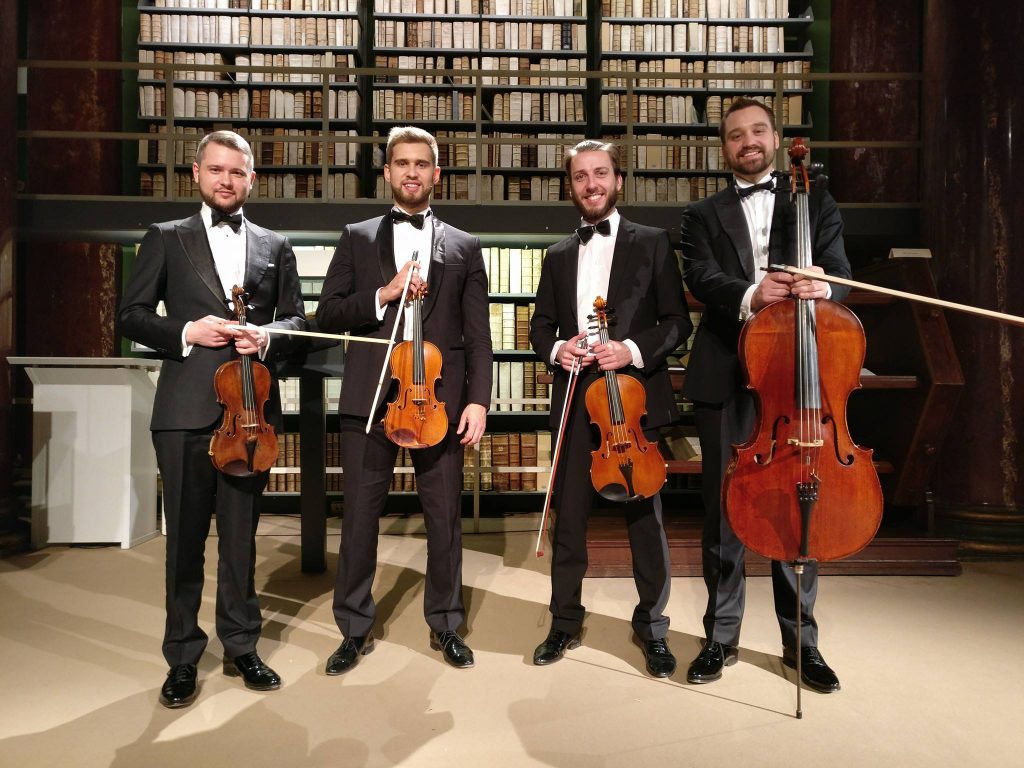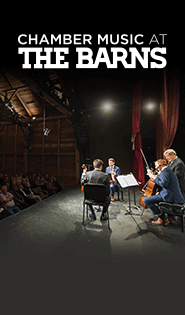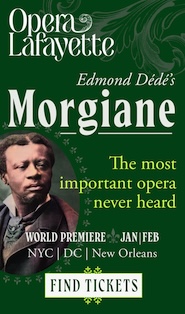Lithuanian musicians mark their country’s centenary in fine style at National Gallery

The Mettis String Quartet performed at the National Gallery on Sunday.
It has been a good week for contemporary music in the nation’s capital. After modern programs by the Aeolus Quartet and Patricia Kopatchinskaja last weekend, followed by a world premiere from Mason Bates at the National Symphony Orchestra, the National Gallery of Art hosted a Lithuanian Centennial Celebration on Sunday afternoon. Lithuanian pianist Gabrielius Alekna and the Mettis String Quartet, founded in 2012 in Vilnius, featured Lithuanian composers in a challenging contemporary program.
Mikalojus Konstantinas Čiurlionis was active as both a painter and composer at the turn of the 20th century. His single String Quartet in C Minor is similar in musical style to other nationalistic composers of the period, like Dvořák or Grieg. The piece is weighted heavily toward the long first movement, its vigorous forte opening theme ricocheting around the wet acoustic of the museum’s West Garden Court. The ensemble sounded more balanced and unified in the more demure second theme, with cellist Rokas Vaitkevičius easing his explosive style.
Where the loud dynamics had somewhat overwhelmed first violinist Kostas Tumosa in the first movement, he floated over the quartet with serene confidence in the placid slow movement, yearning with nostalgia. The slender Menuetto. although graceful and rocking with hemiola shifts, did not provide much of a decisive conclusion.
Remigijus Merkelys, a Lithuanian composer born in 1964, drew inspiration from his earlier countryman’s music in MiKonst, for string quartet and piano. This dazzling piece won first prize at a competition honoring the 125th anniversary of Čiurlionis in 2000. In the opening section Alekna coordinated clustered crunches at the keyboard with differently paced string stings, which went in and out of phase with one another.
Machine-like repetitions from second violinist Bernardus Petrauskas, shadowed by viola and cello, crushed out poignant phrases from first violin and piano. This wistful serenade, growing in melodic intensity, was ultimately subdued by the more barbaric musical elements, leaving one hoping to hear more of this composer’s music in the future.
The Mettis Quartet produced a near-perfect sheen in Philip Glass’s String Quartet No. 2, drawn from a score of incidental music Glass wrote for Fred Neumann’s play adaptation of Samuel Beckett’s 1979 novella Company. With almost all vibrato removed, the musicians launched the opening homophonic chords, carefully balanced and attacked, into the resonant space.
Smooth legato playing revealed the patterns of changing arpeggios in large architectonic shapes, especially in the moody third movement. Although played with expression in long crescendo and decrescendo arches, the triple-versus-duple disjunctions of the finale percolated pleasingly without being overemphasized.
The longest work by far, Robert Schumann’s magisterial Piano Quintet, brought this fine concert to an end. Alekna’s delicate work at the keyboard again proved a useful tonic for the Mettis Quartet, his restraint often pulling them back from overplaying the acoustic.
In the first movement this gave poignancy to the cello’s pleading second theme, answered like a plaintive echo by violist Karolis Rudokas. The funeral march in the second movement, the high point of the piece in many ways, seethed with dark melancholy, interest firmly maintained by the slight rushing of Alekna at the piano, giving the piece a rhythmic edge. Both the Scherzo and the finale movement bristled with energy, the former often a harried whirlwind of sound and the latter fierce and uncompromising.
The Lithuanian musicians gave a worthy tribute to their homeland with these performances, all while their country’s ambassador and his wife looked on with admiration from the front row.
Next on the free concert series at the National Gallery of Art, pianist Daniel Schlosberg, soprano Jessica Aszodi, and cellist Russell Rolen perform music of Weill and Poulenc 3:30 p.m. December 23. nga.gov



